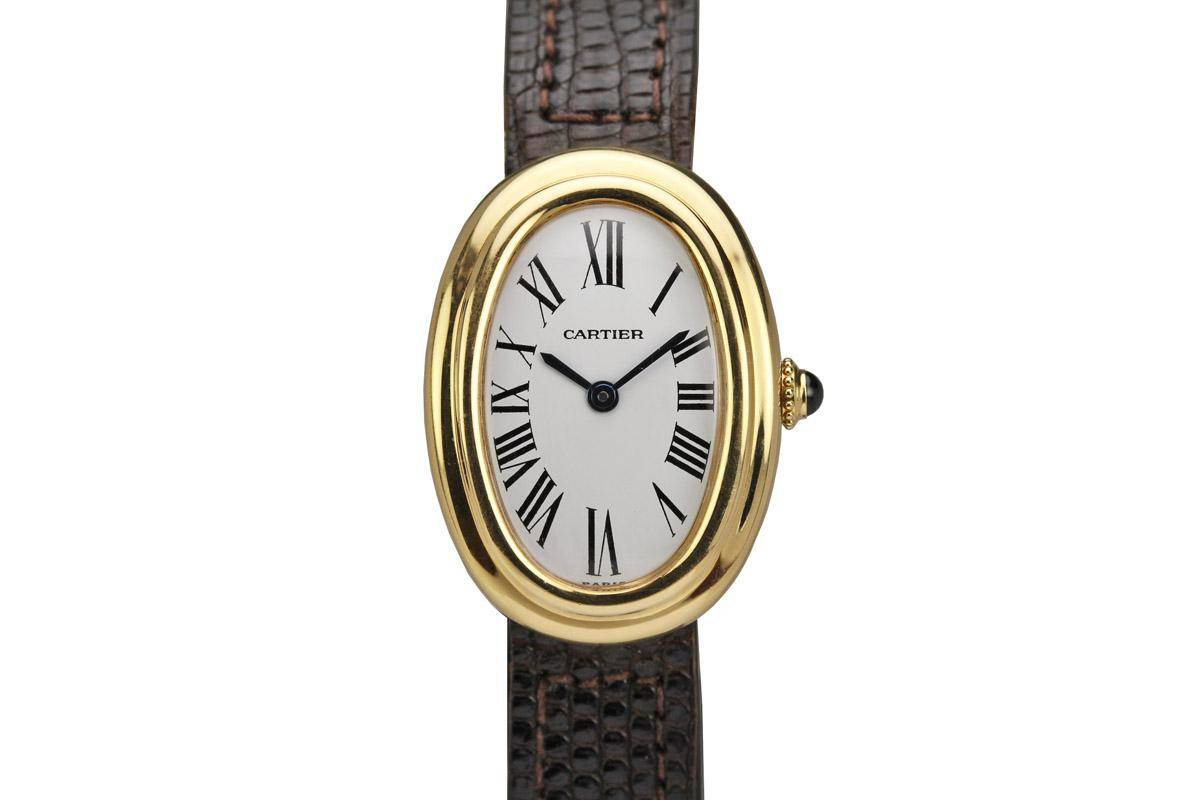Outside influences have touched watch design like everything else. You will find that you will soon be able to date a piece just by glancing at it, as it reflects the style of its time.
Because early designs were usually linked to either wars or sports, they tend to have a heavier look to them, reflecting the style of the pocket watch, from which they are direct descendants. As the technology was first mastered and then perfected, movements could be made for finer and finer cases, until finally small, elegant ladie’s pieces were feasible.
The 1920s
After the quiet elegance of the Edwardian era came the “Roaring Twenties” and Cubism. Its influence was felt throughout the home, spreading into the sphere of personal adornment and accessories, and watches were not left out. The style was meant to reflect the new liberalism and leave behind the stifled ideas of the previous age. The concept that a utilitarian object could be good to look at was firmly implanted in people’s minds and would influence the design of everyday wrist watches. Handsome pieces would no longer be reserved for the privileged few; prices were being made gradually more accessible, thanks to the advances of mechanization on the early assembly lines.
The 1930s
The 1930s signaled the end of Prohibition and a new fluidity to the old structures of the previous decade. Surrealism was now the buzz word, and at the same time, the person on the street began to show an interest in sports. Watches for golf, such as the Reverso by Jaeger-LeCoultre, date from the beginning of the 1930s. Whereas men’s watches were becoming more “masculine” in looks to complement their new outdoor lifestyle, watches for ladies’ evening wear were growing smaller and more delicate in design, reflecting the new fashions.
An examination of the advertising of the era shows that manufacturers were trying to promote the idea of one watch for each activity or part of the wearer’s life – one for sports, one for dressy occasions, and one for casual and office wear. This is probably partly because the techniques needed to make the more delicate-looking watches strong enough to withstand tough wear were simply not available at the time, and the cases for the more elegant styles could not take the pressures of vigorous physical activity.
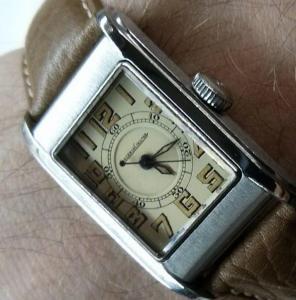
The 1940s
During World War II, all manufacturers’ efforts were directed toward supplying the combat forces, and civilians were generally expected to make do with utility goods or with prewar products, As a result, there are very few watches, other than military, from the period. A few attractive jewelry pieces still exist, their small size an indication of the difficulty in finding the materials needed for their manufacture. Some of the watch companies of the time actually stopped making timepieces during the war years, instead supplying small machinery parts to the various government agencies. What new designs there were usually plain and unornamented, on straps rather than on metal bracelets.
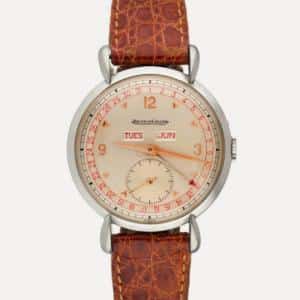
The 1950s
After years of austerity throughout the world, materials were more readily available, and the affluent middle class grew in size. Designers began to set their stamp on everything from table lamps to automobiles. Couturier Christian Dior’s “New Look” was also in evidence: after the lean years, this was an ode to extravagance. Watch desing in those first postwar years slowly regained its momentum and became more adventurous, and with workshops now freed from wartime production, innovative movements began to appear.
In the late 1940s and early 1950s, however, there was still a lack of unnecessary frills, and designs were generally sober and clean-cut. On watches unadorned bezels seemed to be the order of the day, with plain hands and straightforward, functional dials. Ladies’ watches were still, on the whole, very small and neat, with either bootlace straps or the ubiquitous “elasticized” metal bracelet. Although there was a newly emerging youth market hungry for consumer goods, increasingly fashion-conscious and influenced by a number of Hollywood stars such as James Dean, watch manufacturers continued to concentrate on the more established section of the population. The case design remained nothing more than a shell for the mysterious workings inside. But perhaps this was just a reflection of a certain starkness of design creeping in from the world of household interiors, where the use of synthetic new materials was leading to a total revolution in style.
Watches were still seen very much as functional items, except perhaps by the very strong names, with little or no fashion appeal to the young consumer, and the watch as a fashion statement for those from six to sixty was still a long way off, not least because the average cost of a wrist watch was then relatively high compared to average earnings.
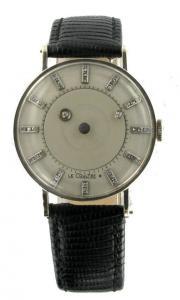
The 1960s
It was only as the 1960s progressed that a more daring approach was taken by the high-profile brands. With Op (as in Optical) Art reaching its peak during this period, it was only natural that something of its concept would filter down to such functional object as the watch.
Every design concept of the 1960s, in the watch world at least, seemed to be “sturdy”. Gone were the delicate little ladies’ watches of previous decades and, as the watch market found its feet within the maze of new technological advancement and the purchasing public grew more discerning, fresh ideas were welcomed. In both ladies’ and men’s jewelry watches, colors were used in profusion: turquoise, coral, and amethyst all featured. The house of Piaget produced some outstanding watches during the decade, pieces today displayed in museums.
It was also at this time that Omega produced one of its classics, the Dynamic. Although it was not a jewelry watch, its design was typical of the period: first produced in the late 1960s, with a thick oval-shaped case and a very wide strap, it was made to be durable. A production run of over one million means that the Dynamic design can still be seen today, and the straps continue to be made – proof of an enduring design if ever there was one.
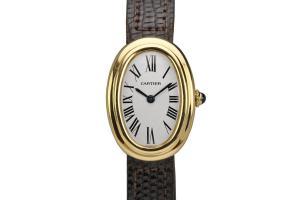
The 1970s
The progress made in style and exterior visual appeal during the late 1960s and the 1970s may have been due to the fact that Swiss watch manufacturers were having to compete against the wave of inexpensive Far Eastern digital watches which were beginning to flood the international market. Technological excellence was not enough; the product had to look good as well as being funcional in order to compete in a more and more crowded marketplace.
The 1960s was a decade of contrasts, with a budding consumerism on the one hand and a growing environmental awareness on the other, so it is not surprising that the watch industry as a whole started to lose its direction. This would contribute to the upheavals of the 1970s, when the coming of quartz led to a revolution in the trade, and extremes in design resulted from the earlier Op and Pop Art influences.
With the developing youth culture of the late 1970s and early 1980s, the rediscovery of consumer goods and the advent of the “yuppie” culture, there was an increasing demand for good-quality watches of fashionable design. The Swiss watchmaking industry showed its renewed confidence by bringing out more fashion-conscious pieces at prices previously reserved for the fairly conservative lines. Designer watches started to appear in strength to satisfy a label-hungry public, and fashion houses such as Christian Dior, Yves St. Laurent, and Gucci had watches designed to complete their “look” for the season. These pieces were generally made with gold-plated cases and Swiss watch movements. The fashion houses themselves obviously had very little part in their manufacture except to insist on stringent quality control. Such watches can make an interesting collection: as they were meant to have a very high-fashion appeal, the colors and materials employed may be slightly more adventurous than those used by the true watch houses. You can see the fashions changing through the watches, as the fashion houses tended to bring out new lines to keep up with the styles dictated by the catwalk.
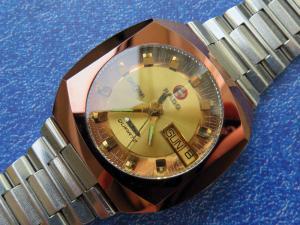
The 1980s
With the 1980s came the “statements”: the ex-hippies, now into their thirties, wanted something to show for all their hard work. World economy was booming, fashion trends were arriving thick and fast, and people had the money to keep up with all the changes. However, to show off all these marvelous new clothes and accessories and to impress on the boss that you were bright-eyed, bushy-tailed, and raring to go, you needed to be fit. To get fit, you had to participate in a sort – which meant that you needed a sports watch. The watch industry was quick to cater for this need, and by the late 1980s it was diffucult to find a brand which did not possess a sports range.
Nonetheless, to match their versatile lifestyle, people were still demanding slim, elegant “dress” pieces. The mid-1980s saw the emergence of some highly stylized pieces with strange shapes. For instance, the Sectora, by Jean d’Eve, had unusual hand movements dictated by the shape of the case. There was also a considerable growth in small watch companies cashing in on a fad for retrospective pieces using good-quality Swiss quartz movements in old-style shaped cases. Michel Herbelin and Emerich Meerson both made very attractive watches with good, sound movements, and some may still be found today.
The 1990s
Sports watches maintained their popularity in the early 1990s, but there was an increase in models falling into the middle ground between the sports and dress areas, and some sports pieces even showed a few diamonds! The interest in reviving old design had not died out, and copies of earlier watches remained extremely popular, either as true replicas or by taking the original design as the basis for a new version.
Designs in today’s watch market, both new and replicas of vintage models, reflect an extraordinary range of ideas and trends. It has never been so easy to start an interesting collection; with many companies bringing out anniversary and commemorative pices, collectors of old designs need not be subject to the pitfalls of buying and owning very old watches.
